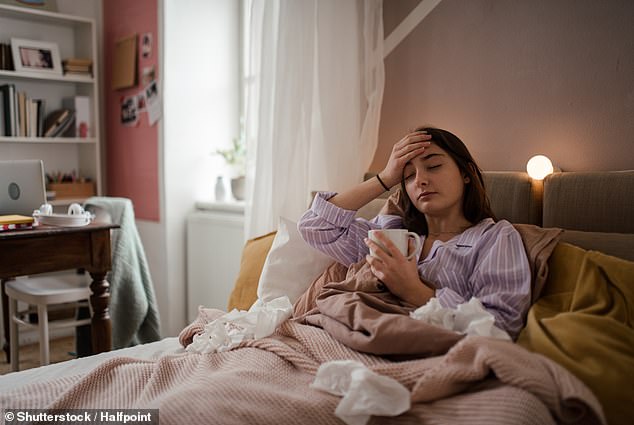Whooping couch and pneumonia strikes young Aussies in NSW – as health experts issue urgent warning to parents
Wearing masks is once again being encouraged to help reduce the spread of a worrying disease that is spreading ‘rampantly’ and disproportionately affecting young people.
Whooping cough rates are at their highest in eight years in NSW, and the number of young children going to hospital with pneumonia is more than double what it was this time last year.
For every 100,000 people in NSW so far in 2024, there have been 103.1 reports of whooping cough, also known as whooping cough, NSW Health’s latest respiratory surveillance report showed.
The last time the figures were higher than this was in 2016, when the rate was 139.6 per 100,000.
“Respiratory disease is currently widespread in New South Wales,” said Professor Robert Booy, an infectious diseases pediatrician at the University of Sydney.
Wearing masks is once again being encouraged to help reduce the spread of a worrying disease that is spreading ‘rampantly’ and disproportionately affecting young people (stock image)
He told the ABC whooping cough and mycoplasma that are ‘actively’ spreading, especially among primary school children, ’cause pneumonia, they cause hospital admissions, emergency care and the need for antibiotic treatment’.
A NSW Health report has advised people to stay home if they are feeling unwell and wear a mask if they have to go out to help reduce the spread of viruses.
Pneumonia rates among children under the age of 16 are “unusually high” and well above levels recorded in the past five years, the report said.
In early June, almost 140 children under the age of four were taken to A&E with pneumonia – more than double the 60 presentations in the same period last year.
For children aged five to 16, the figure was much worse, with 400 at the start of June 2024, compared to less than 50 at the same time in 2023.
The NSW report said the increase was likely due to a specific strain known as ‘walking pneumonia’, which is often caused by the mycoplasma pneumoniae bacteria.
According to the report, this is “a common cause of pneumonia in school-aged children and epidemics occur every three to five years.”
The last epidemic in NSW was before the Covid-19 pandemic.
Dr. Rebekah Hoffman, president of the NSW and ACT chapter of the Royal Australian College of General Practitioners, said most people who get mycoplasma pneumoniae don’t feel too bad but may cough persistently for weeks or even months.
“But for some children, especially if they have a weakened immune system or other respiratory lung problems, they can become very sick and require hospitalization,” she said.
Due to social distancing during the pandemic, especially in 2020 and 2021, children were not exposed to other diseases such as whooping cough and pneumonia.
“So there are a lot of susceptible young children in primary school, especially who develop whooping cough and spread it at school and in other settings,” Prof Booy said.

Whooping cough rates are at their highest in eight years in NSW, and the number of young children going to hospital with pneumonia is more than double what it was this time last year (stock image)
Before the pandemic, whooping cough tended to increase every three to six years, but Covid has seen this expand to every six to eight years.
Whooping cough can have very serious consequences for newborn babies.
“The children most at risk are the very youngest… they need protection from their mother’s vaccination during pregnancy, to develop antibodies that are passed on to the baby before it is even born,” Prof said. Booy.
The NSW Health Department data also showed Covid remained ‘high’ in the state.
